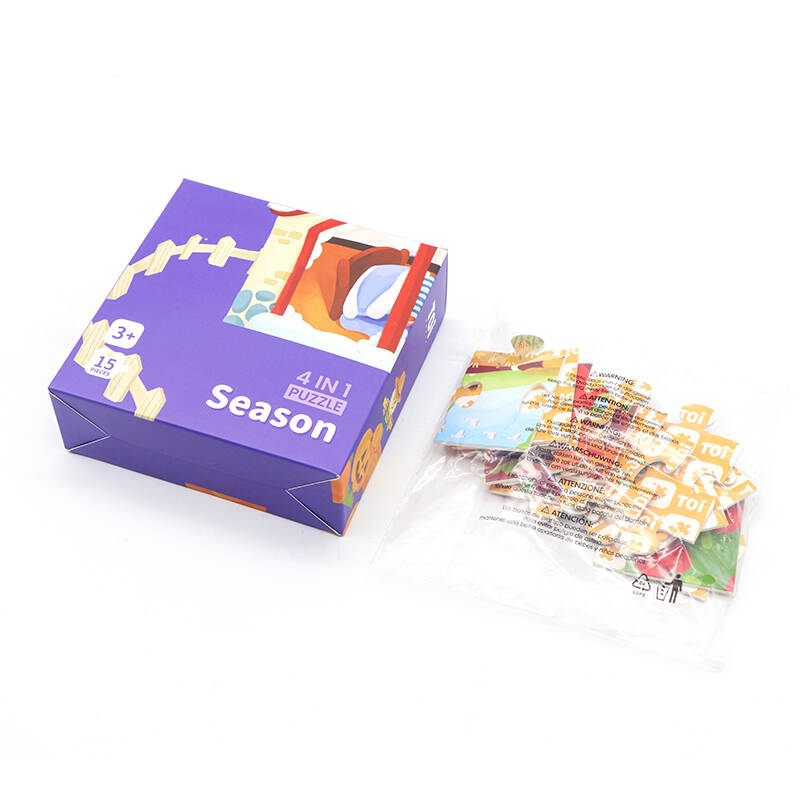Eight Developmental Stages of Children's Puzzle Playing
June 16,2022
Although each child develops at a different pace, generally speaking, children can try to play puzzles at the age of one.

Jigsaw puzzle has 8 development stages, as follows:
- One to one correspondence: children can fill in the puzzle pieces when they find the depressions on the puzzle. He usually tries to fill any puzzle piece in the depression (regardless of color or shape).
- Matching depressions and jigsaw pieces: he realized that each depression had only one corresponding part. Tends to rely on color to find the correct puzzle pieces.
- Identify differences in size and shape: now, children can make puzzles according to color, size and shape, and usually find the correct puzzle pieces or positions faster. However, it is not known to rotate the jigsaw pieces so that they can be placed in the groove. He may give up the correct puzzle piece and try another incorrect one.
- Operation: he will rotate the puzzle pieces to see if they fit.
Note: at any of the above stages, after completing the puzzle, the child can complete the puzzle again independently depending on his memory and fine motor skills. Then you can play the common puzzle pieces.
- Related puzzle pieces and classification: children can see the relationship between puzzle pieces; Start classifying and grouping colors and designs by their similarity. He began to see small differences between the fragments; And you can compare the puzzle with the finished picture on the outer package of the puzzle box, and understand that the scale of the two is different. You may not know the meaning of some puzzle pieces with one or more straight edges.
- Visualization and the whole and part: he can now "see" the whole picture of the puzzle in his mind (for example, the puzzle with black line segments will be connected to form a continuous line). He can see both parts and the whole. (for example, clown Puzzles: even with different shapes and colors, children can first classify the puzzles of the clown's face, then the legs, etc.)
- Mirror jigsaw puzzle: children can meet the above requirements now, but sometimes there will be mirror jigsaw puzzles (i.e. left-right or top-down). Children reflect the whole picture in their minds and can identify the similarities of the puzzle pieces, but the direction may be the opposite.
Children can now play standard jigsaw puzzles, which can be completed on the table even without the hint of the puzzle base.
- Jigsaw puzzle: children realize that a jigsaw puzzle with two vertical edges means that it should be placed in the corners. And he knows that there are only four pieces of this puzzle, and he will actively look for them. Realizing that there is only one straight line in the puzzle means that it should be placed on the edge.
By the end of first grade, children should normally be able to reach stage 5 (and possibly stage 8). If he still seems unable to reach stage 6 and stage 7 by the fourth grade, he may have learning disabilities.
When the child is confused about where the next piece of the puzzle should be put, ask him to tell him how his previous pieces were put together. Control your impulse to tell him where to put the puzzle pieces when you play with him. By asking questions to demonstrate how to solve problems, you can ask him "what are the similarities between the two puzzles that you put them together?" "This puzzle piece has a straight edge. Where should it be placed?" And don't forget to be a cheerleader. When the child succeeds, give him a warm "Yeah!"
Searching for a 1000 piece jigsaw puzzle supplier, word cookies daily puzzle today factory, sublimation blanks puzzles factory from China, you can get high-quality products at a nice price.